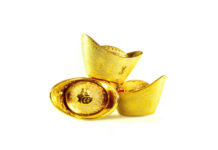USD/JPY has posted gains in the Monday session, gaining 0.74%. In the North American session, the pair is trading slightly above the 113 level. On the release front, Japanese Tankan Indices were both within expectations. The Tankan Manufacturing Index improved to 17, easily beating the estimate of 12. The Tankan Services Index improved to 23, just shy of the forecast of 24. Japanese Consumer Confidence softened to 43.3, missing the estimate of 43.9. In the US, ISM Manufacturing PMI climbed to 57.8, beating the estimate of 55.0.
The Japanese economy has shown some improvement, but consumer spending and inflation remain sore points. Japanese retail sales slowed to just 2.0% in May, compared to 3.2% a month earlier. The weak figure points to a Japanese consumer who is hesitant to open the purse strings. Wages have been stagnant, which has hampered consumer spending, a key driver of economic growth. Inflation is stuck below 1 percent, well below the BoJ’s target of 2 percent. Tokyo Core CPI, the primary gauge of consumer inflation, edged down to 0.0%, below the estimate of 0.2%. The index has posted just one gain in the past 18 months, underscoring that the BoJ’s ultra-loose monetary policy has not been able to raise inflation levels anywhere near the bank’s target of 2 percent.
There was no getting around the fact that the US economy slowed down in the first quarter, but there was some good news, as the revised GDP reading was raised to 1.4%, better than the initial estimate of 1.2% in May. The improvement was attributed to stronger consumer spending and an increase in exports. Earlier in the year, the markets were braced for a very poor quarter, with the first estimate in April projecting a gain of only 0.7%. Inflation remains stubbornly low, and consumer spending is also soft, despite high consumer confidence levels. In May, Personal Spending softened to 0.1%, down from 0.4% a month earlier. If inflation levels don’t show some improvement, the Federal Reserve may have second thoughts about a December rate hike.













